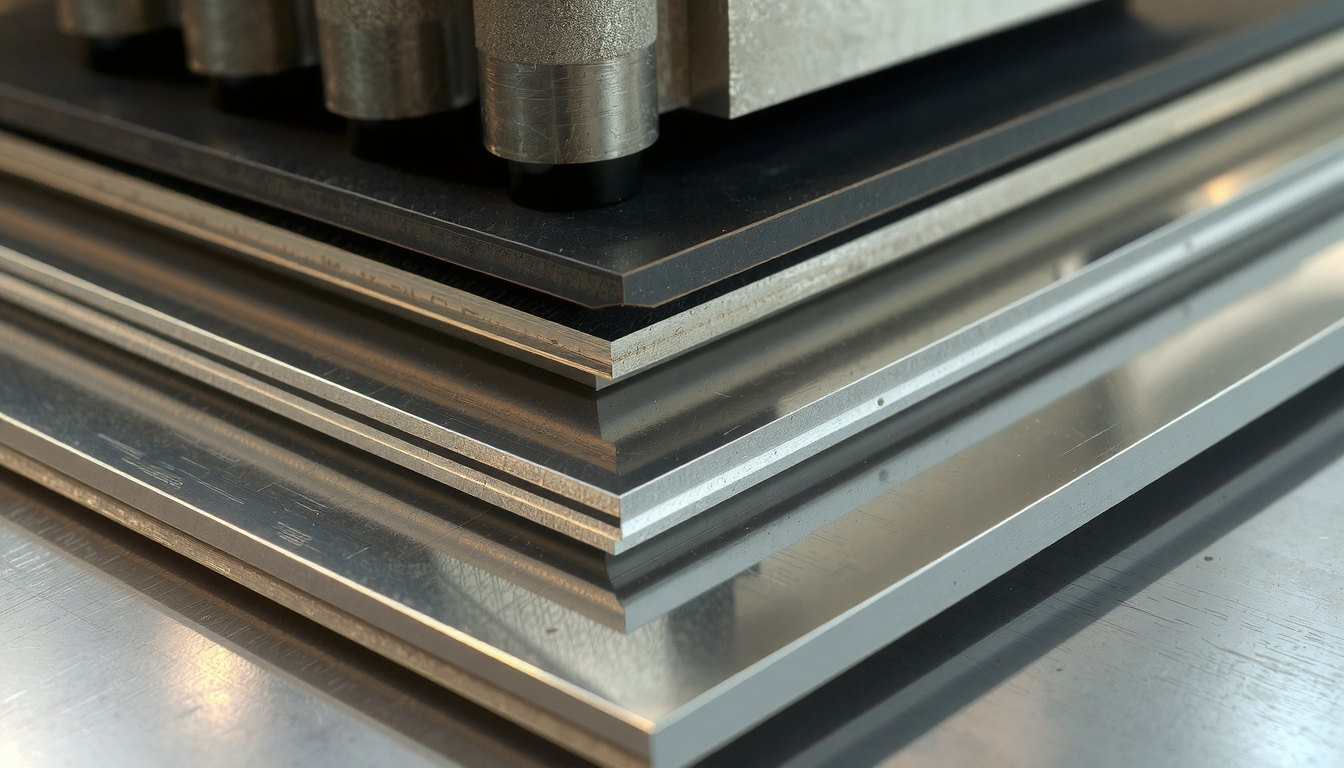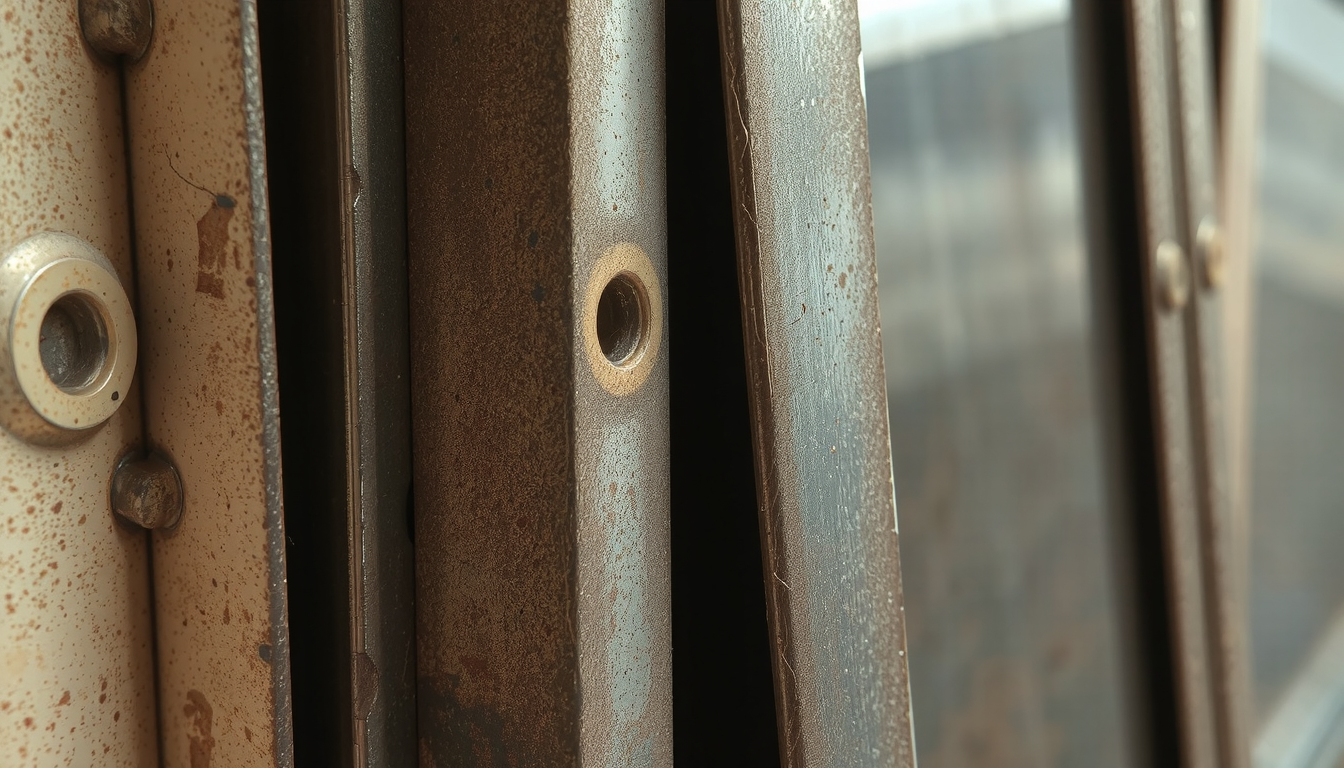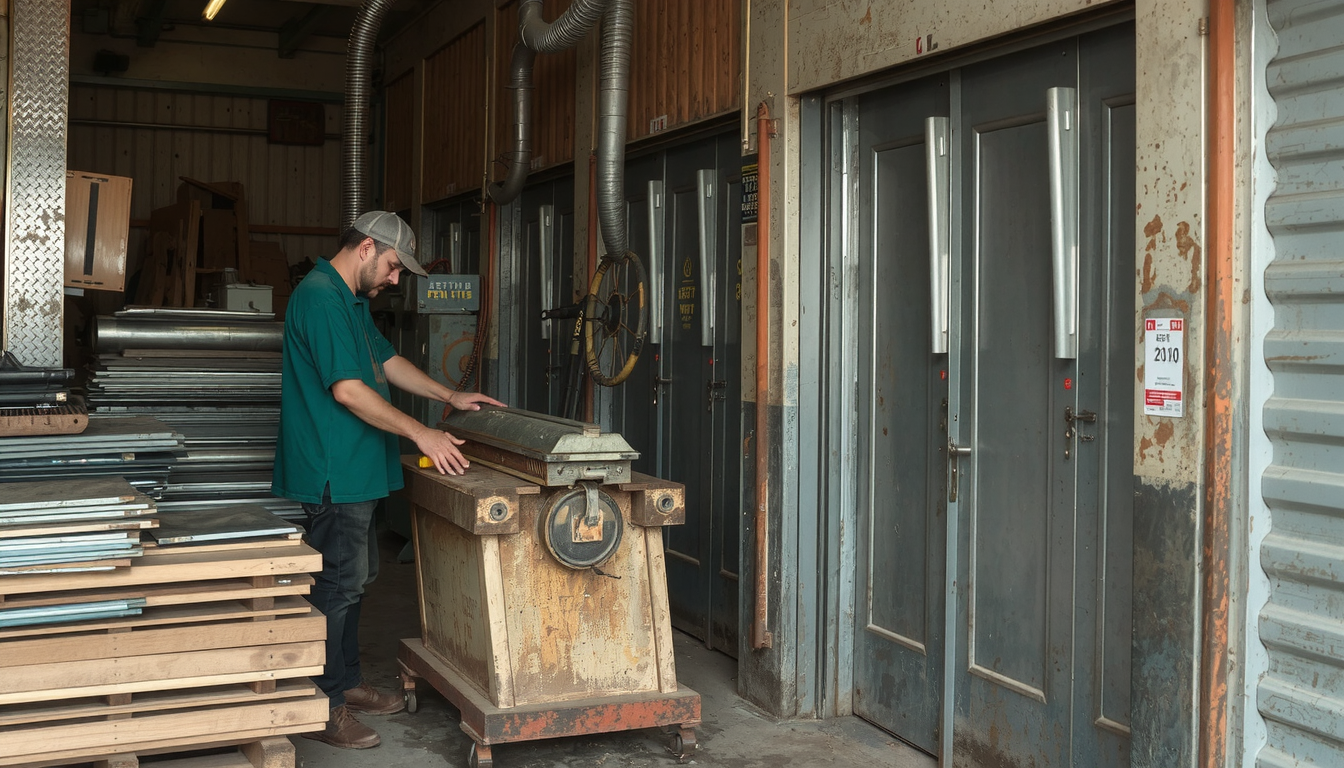So, what are sheet metals? In simple terms, sheet metal is metal formed into thin, flat pieces. This is done through large industrial manufacturing methods. These methods press and roll the metal until it attains its final shape. It is a key material in the industry and has been since antiquity.

Every day you see various items in your surroundings made out of sheet metal. It is a material used in your car’s body, washing machine’s case, and HVAC systems in the building you work in. Its strength and ability to be shaped into special forms make it very useful.
This instruction will give you a compendious guide to this material. We shall examine various sheet metal types. We will show the way to select the most appropriate one for a particular project. We’ll make sure to bring our discussion through the journey from raw materials to the finally manufactured part. We will also check and explain its numerous common applications.
H2: Sheet, Plate, and Foil: The Essential Distinction
When it comes to flat metal, the primary difference is thickness. Getting the categories is the first step to becoming familiar with what are sheet metals. It also assists with the selection part for a job. Every term denotes only a certain thickness range.
In accordance with the Sheet Metal Definition, this group is divided based on the thickness of the material. Although stiff measurements may vary from metal to metal, the following guide for sheet metals is generally correct:
- Foil: This is the most delicate form of metal. The thickness is generally less than 0.2 mm. This is approximately 0.0079 inches. A good example would be aluminum foil which you regularly use in the kitchen.
- Sheet: This is the intermediate level. Most people are referring to sheet metal when they say this. The thickness spans generally from 0.5 mm up to 6 mm. In inches, that’s around 0.02 to 0.25.
- Plate: This is the thickest type. Anything above 6 mm is regarded as a metal plate. That’s about 0.25 inches. It is mostly used for industrial parts requiring properties of heavy-duty.
You may have also heard the term “gauge” when it comes to describing thickness. Gauge is a system that has been around for a long time, and the measurement units used differ from one metal to another. It can get confusing. In this case, a lower gauge number is equivalent to a thicker sheet of metal. For example, steel rated at 16 gauge is substantially thicker than steel rated at 22 gauge.
H2: The Most Common Types of Sheet Metals
The material that you use is extremely significant in a project. The type of sheet metal that is used will be the determinant of whether your part has durability or not. It also affects the product’s weight, rust resistance, and its cost. There are many various types of sheet metals. However, a few of them are used much more than the others. The main reason is their beneficial properties.
Outlined below is a table that provides a summary of the most widespread types of sheet metals. This table can help you easily find the one which suits your needs the best.
| Материал | Основные свойства | Общее использование | Относительная стоимость |
|---|---|---|---|
| Нержавеющая сталь | Resists rust and stains, strong, clean look | Kitchen appliances, medical gear, food processing | $$$ |
| Алюминий | Lightweight, good strength, resists rust | Aircraft parts, car bodies, electronics cases | $$ |
| Углеродистая сталь | Strong, easy to shape, low cost | Car frames, structural parts, machinery | $ |
| Galvanized Steel | Coated with zinc to prevent rust, very low price | Roofing, HVAC ducts, outdoor structures | $ |
| Copper & Brass | Easily conducts electricity, a unique look | Electrical wiring, plumbing, decorative items | $$$$ |
H3: Stainless Steel
Stainless steel is an alloy. Consequently, it is a combination of metals. The alloy is composed of chromium which provides it with outstanding rust and erosion resistance. Therefore, it is perfect for the items that are usually wet. Kitchen sinks and food processing machines are good examples. The most common grades are 304. Grade 316 is opted for tough or saline environments.
H3: Aluminum
Aluminum is known for being lightweight but also surprisingly strong. This is mainly the reason why it is used in airplanes. High-performance autos that want to save on weight also employ it. This metal forms a thin layer that protects it from rust. There are common grades, like 5052, which are suited for workability. Grade 6061 is used in structural components because it is more powerful.

H3: Carbon Steel (Mild Steel)
Most of the time, carbon steel is referred to as mild steel. It is one of the most affordable and widely used metals. It is very tough and simple to work with, bend, and weld. This is one of the reasons why it is popular with manufacturers. On the other hand, it rusts easily. It must be coated or painted before being subjected to moisture.
H3: Galvanized Steel
Galvanized steel is nothing but carbon steel with a thin layer of zinc on it. The zinc layer works as a barrier. It undercuts the rusting of steel beneath. Thus it is a low-priced, rust-resistant alternative. It’s a great solution for outdoor things. Fence posts, roofing, and HVAC ducts could be mentioned here.
H3: Copper & Brass
Copper is very much appreciated because it is an excellent conductor of electricity. Because of this, it is very necessary for wiring and piping projects. On the other hand, brass is an alloy made from copper and zinc. They are both metals with a specific, attractive color. Therefore, they are frequently used for decorative objects, musical instruments, and luxury fittings.
H2: How to Choose the Right Sheet Metal: A Practical 4-Step Guide
Picking the right material is one of the key decisions during your project. A wrong decision could result in a part that fails to perform as expected, rusting, or even being uneconomical. This four-step guide simplifies the decision-making process. This allows you to choose the best possible answer. Understanding what the properties are for sheet metals is important.
A common error that people make is not considering the environment. For instance, the material of a part used indoors is totally different from the one exposed to marine air. The starting point should always be where and how the part will be used.
H3: Step 1: Evaluate the Operating Environment
First, you should ask yourself where the part will be. Is it going to be indoors or outdoors? Will there be moisture on it, rain, or sea salt spray? Will it come in contact with any harsh chemicals?
For wet or outdoor use, you need a material that is resistant to corrosion. Possible options would be stainless steel, aluminum, or galvanized steel. For a dry, indoor place, a cheaper choice like carbon steel can work fine, as long as it gets painted.
H3: Step 2: Define Strength and Weight Requirements
Then, you need to consider the physical demands. Does it have to hold up heavy things? Is it a structural piece? If so, steel is often the best choice for its high strength. But what if weight is a big issue? For things like airplanes, cars, or portable gadgets, every ounce is important. In those situations, aluminum is a great choice. It gives you good strength but weighs much less than steel.
H3: Step 3: Consider the Manufacturing Process
How is the part going to be made? If your design has a lot of tricky bends, you need a metal that is easy to form. Some materials, like mild steel and some types of aluminum, are easy to work with. Others, like high-strength steels, can crack if you’re not careful when bending them. You should also think about whether the parts need to be welded together. Some metals are easier to weld, and this can change the final cost and how good the part turns out.

H3: Step 4: Balance Your Budget
Last but not least, you have to think about your budget. You often have to choose between better performance and a lower price. Carbon steel is usually the cheapest, which makes it great for making lots of parts where cost is the main thing. Aluminum costs more than steel, and stainless steel costs even more. Special metals like copper and brass are some of the most expensive. Your goal is to pick the cheapest material that still does everything you need it to do.
H2: The Journey of Sheet Metal: From Raw Material to Fabricated Part
Did you ever wonder how a flat piece of metal turns into a complex 3D object, like a car door? The process is a journey that has two main stages. First, the sheet itself is made. Second, that flat sheet is cut up, bent, and put together to make the final part. Understanding this journey helps explain what are sheet metals and what they can do.
H3: Part 1: Creating the Sheet (Hot vs. Cold Rolling)
It all begins with a big, thick slab of metal called an ingot. This ingot is heated up and run through huge rollers again and again. This action squeezes the metal, making it thinner and longer until it becomes a sheet.
-
Hot Rolling: This is done when the metal is very hot. The heat makes the metal soft and simple to shape. Hot-rolled metal has a rough surface with scales on it. It’s often used for structural pieces where a perfect look isn’t necessary.
-
Cold Rolling: This step happens after hot rolling, when the metal is at room temperature. It uses even more pressure to make the metal thinner. Cold rolling gives the metal a smooth, clean surface and a very exact thickness. This is the starting material for things like car bodies and appliances.
H3: Part 2: Shaping the Part (Common Fabrication Techniques)
After the flat sheet is made, it’s time to shape it into a part you can use. This is done using several different fabrication methods.
- Cutting: The first step is usually cutting the flat shape, called a “blank,” out of a bigger sheet. This can be done with lasers for very precise cuts. Plasma is used for thicker metals. A strong waterjet can cut almost anything without using heat.
- Forming: Next, the flat blank is bent into a 3D shape. This is usually done with a machine called a press brake, which can make very precise angles. Another method is stamping, where a die presses the sheet into a complex shape, like you’d see in a kitchen sink.
- Joining: If a part is made from more than one piece, they have to be joined. Common ways to do this include welding, which melts the metal edges to fuse them. Riveting is another way, using small metal pins to hold pieces together.
These are the main processes in modern manufacturing. For complex jobs that need high precision, it’s important to work with specialists. Производство листового металла specialists can take a design and make it real. Often, these parts are put together with components made by other methods, like Услуги токарного станка с ЧПУ, to create full, working assemblies.
H2: Where Is Sheet Metal Used? 8 Surprising Everyday Examples
Sheet metal is one of the most adaptable materials on earth. It’s a fundamental building block for countless items in nearly every industry. Here are some of the most common uses of sheet metal that you likely see every single day.
- Automotive Bodies & Panels
The bodies of most cars and trucks are made from sheets of steel and aluminum. Steel provides strength for the frame, while aluminum is used for panels like hoods to reduce weight and improve gas mileage.

-
Major Home Appliances
Take a look at your fridge, oven, or washing machine. Their outer shells are almost always sheet metal—often stainless steel for its clean appearance or painted carbon steel to keep costs down. -
HVAC Ductwork
The ducts that move air around your home or office are typically made of galvanized steel. The zinc coating is vital for stopping rust, which is important in the damp spaces inside walls and ceilings. -
Building Roofs and Facades
Metal roofing is very durable and lasts a long time. It’s often made from galvanized steel because of its cost and strength. Architects also use materials like aluminum, copper, or stainless steel for the faces of modern buildings. -
Kitchen Sinks & Cookware
For kitchen sinks and cookware, stainless steel is the top choice. It doesn’t rust, it’s simple to clean, and it won’t have a reaction with food, which makes it both safe and hygienic. -
Electronics Casings
The case for your laptop, desktop PC, or a server is usually aluminum or steel. Metal gives it strength, protects the fragile parts inside, and also helps to get rid of heat. -
Аэрокосмические компоненты
Airplanes depend a lot on high-strength aluminum sheet metal. It’s used for the fuselage (the main body), wings, and other structural pieces where both strength and light weight are essential. -
Medical Tables & Equipment
Medical gear has to be sterile and easy to clean. Stainless steel is the ideal material for things like operating tables, medical carts, and trays for instruments because its surface is smooth, not porous, and resists corrosion.
Understanding what are sheet metals is the first step toward creating great products. We have defined sheet metal. We explored the common types. We learned how to choose the right one. We saw where it is used all around us.
Sheet metal is a versatile and fundamental material. It forms the backbone of modern manufacturing. Its unique combination of strength, formability, and value makes it essential. It is an essential component in nearly every industry.
Understanding these fundamentals is the first step toward a successful project. At Mekalite, we leverage our deep expertise in materials and fabrication. We deliver high-quality components for industries worldwide.
H2: Frequently Asked Questions (FAQ) about Sheet Metals
H3: Q1: What is the most common type of sheet metal?
A: It really depends on the industry, but you could say aluminum and stainless steel are the most common. This is because they have a great balance of strength, resistance to rust, and can be used for many things. Mild (carbon) steel is also very common, especially when cost is the most important factor and the part will be painted.
H3: Q2: Can sheet metal be painted?
A: Yes, you can paint most sheet metals. The key to making the paint stick and last is preparing the surface properly. Materials like carbon steel usually need to be painted or powder coated to protect them from rust. Aluminum and stainless steel are often painted for a better look or for branding.
H3: Q3: Is sheet metal stronger than plastic?
A: Usually, yes. If you compare the same thickness, most sheet metals are much stronger, stiffer, and more resistant to heat than typical plastics. But the choice really depends on what you’re using it for. Plastics can be lighter and better at resisting certain chemicals, and they also give you more freedom in design.
H3: Q4: What does “work hardening” mean in sheet metal?
A: Work hardening is what happens when a metal gets stronger but also more brittle as you bend or stretch it. This is a very important thing to consider during fabrication. If you bend a part too much or too sharply, some metals can harden and might even crack. Some grades of stainless steel are a good example of this.
H3: Q5: How is sheet metal sold?
A: Sheet metal is usually sold in two ways. For making a lot of something, it comes in big, heavy coils that are unrolled and fed into machines. For smaller projects, it’s sold in flat sheets that are already cut to standard sizes, like 4×8 feet or 4×10 feet. Suppliers can also cut custom sizes if you order them.

